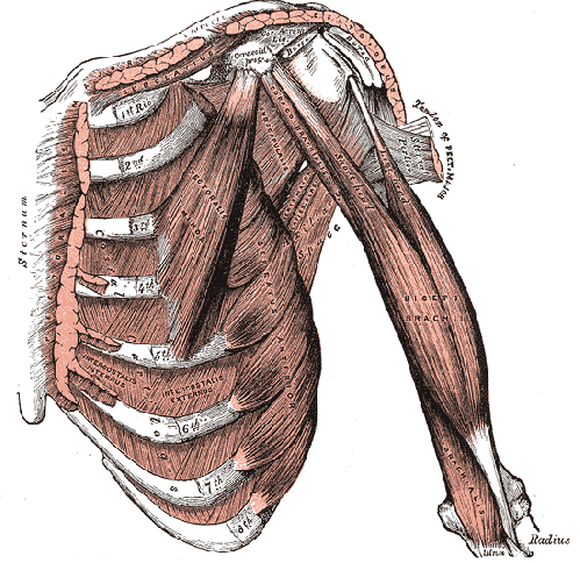“Bicep” is the Latin word for Two Headed. As you might imagine, this is because there are two muscles which make up the Biceps Muscle (the long head and the short head). Even if you don’t know where the bicep muscles is, you know where the bicep muscle is. It is the arm muscle that little boys will show you when you ask them to, “make a muscle“. As you can imagine from the pictures below, tendon problems in this muscle are commonly misdiagnosed as a ROTATOR CUFF PROBLEMS or SUBACROMIAL BURSITIS.
In the following pictures, I want you to notice the proximity of the upper attachment of the bicep muscle to both the Subacromial Bursa (the reason it is frequently confused with bursitis) and the Rotator Cuff (the reason it is frequently diagnosed as a Rotator Cuff problem). Although I do at times see Biceps Tendiopathies at the elbow attachment, it is far more commonly seen at it’s upper attachment. If you are wondering why the name Biceps Tendinosis instead of Biceps Tendinitis, you simply need to spend a few minutes on our TENDINOSIS -vs- TENDINITIS page. Below are two pictures of the biceps tendon, the only difference being that in the second one the superficial muscles have been removed.
 |
 |
